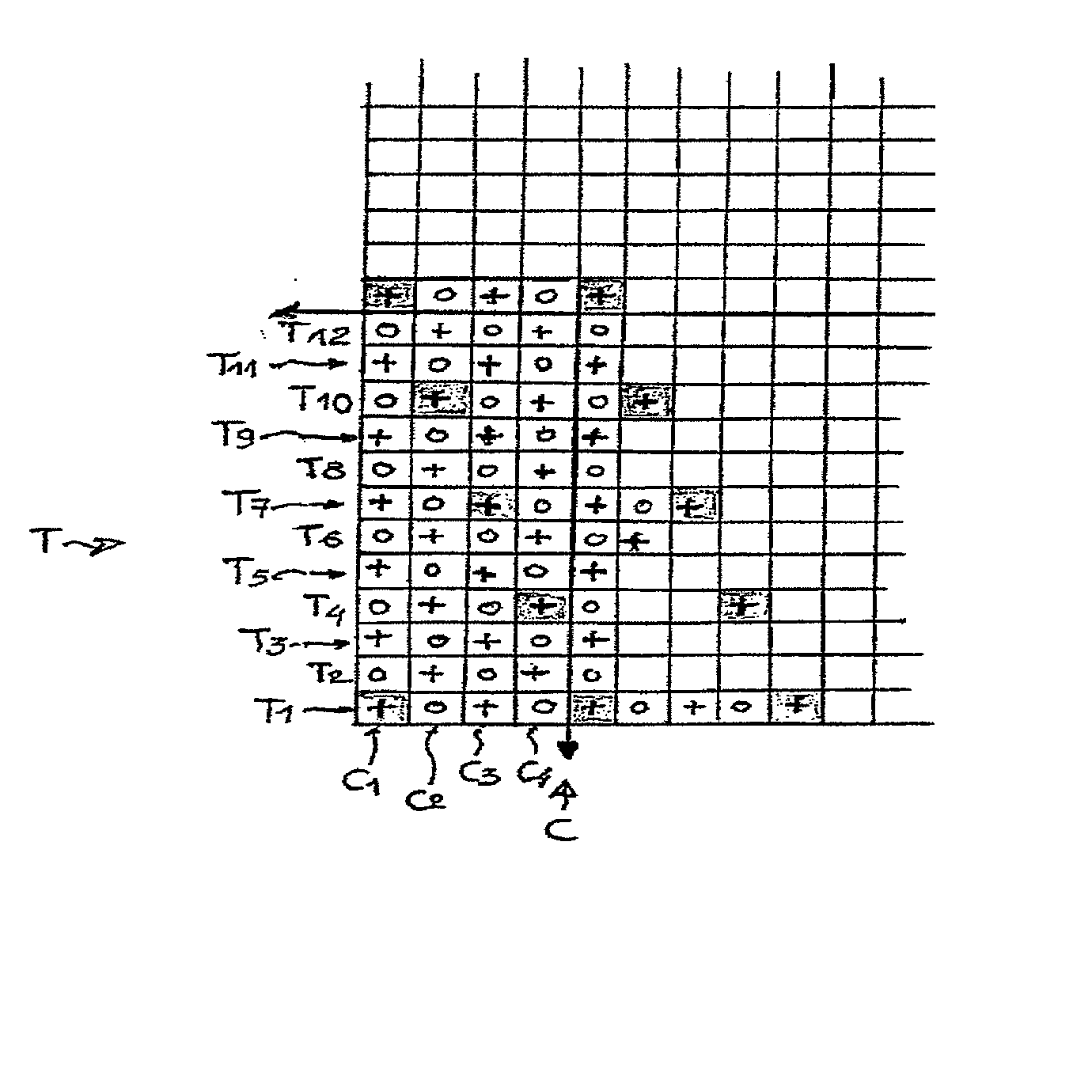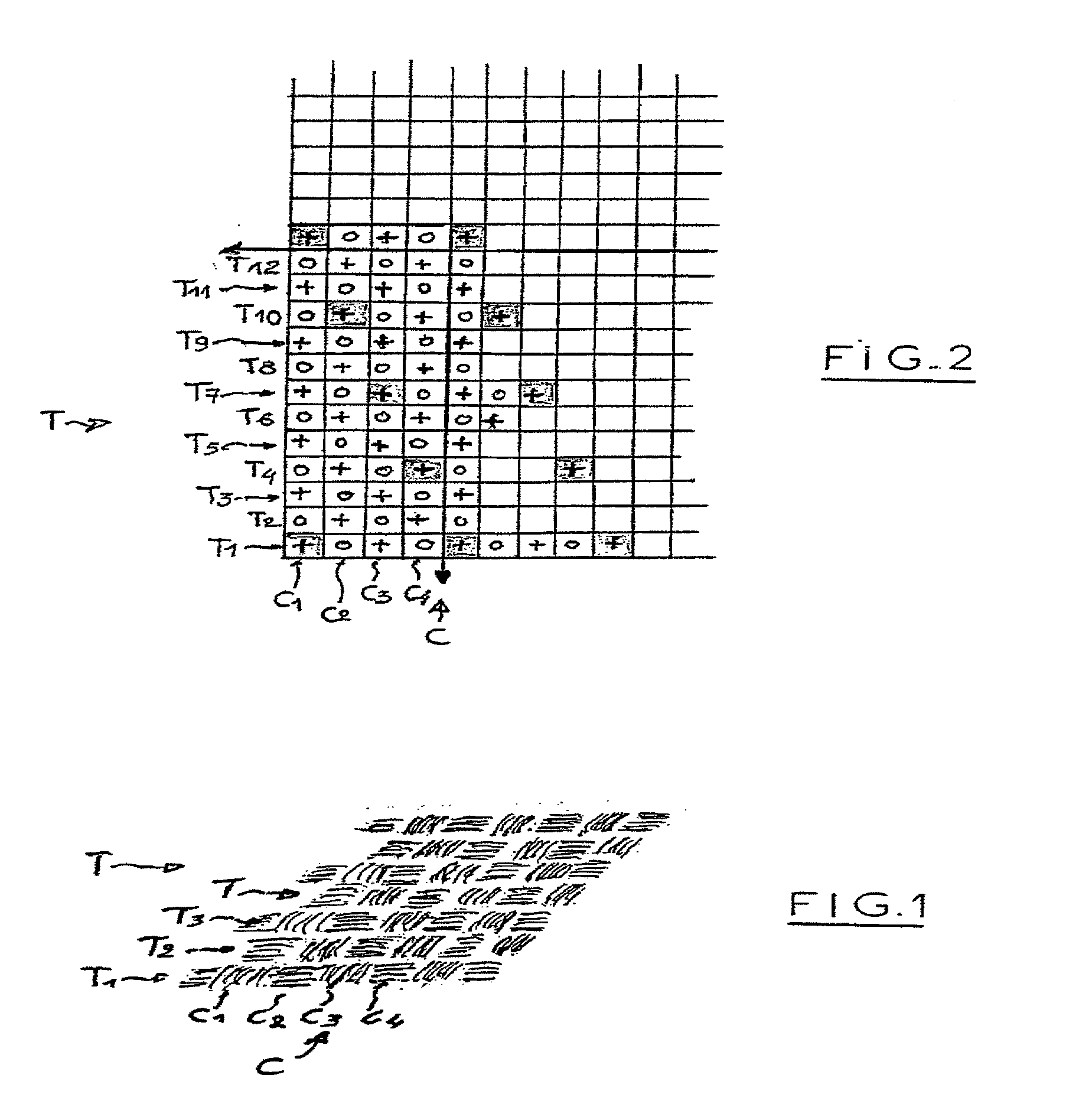Textile material in sheet form for technical uses
a technology of sheet form and textile material, applied in the direction of auxilary apparatus, weaving, woven fabrics, etc., can solve the problems of deformation of woven structures, and inability to produce unidirectional sheets,
- Summary
- Abstract
- Description
- Claims
- Application Information
AI Technical Summary
Benefits of technology
Problems solved by technology
Method used
Image
Examples
example 2
[0081] Example 1 is repeated except that, before the treatment to weaken the warp yarns, the fabric is combined with a glass mat weighing 300 g / m.sup.2.
[0082] The fabric / nonwoven mat assembly is bound together by stitching / knitting by means of binding yarns having a linear density of 16.7 tex.
[0083] The stitching may either be simple chain stitches or it may form a knit.
[0084] In both cases, the wales preferably extend on either side of each warp yarn and are located on that side of the fabric which has to be treated.
[0085] As regards the binding meshes between the stitches, these are located on the reverse side of the nonwoven mat.
[0086] After production, such a complex weighs 810 g / m.sup.2 and has a thickness of 1.10 mm.
[0087] It is particularly suitable for being used for the production of complexes employed for repairing pipes, such as those described in the preamble of the present application.
PUM
| Property | Measurement | Unit |
|---|---|---|
| Length | aaaaa | aaaaa |
| Length | aaaaa | aaaaa |
| Thickness | aaaaa | aaaaa |
Abstract
Description
Claims
Application Information
 Login to View More
Login to View More - R&D
- Intellectual Property
- Life Sciences
- Materials
- Tech Scout
- Unparalleled Data Quality
- Higher Quality Content
- 60% Fewer Hallucinations
Browse by: Latest US Patents, China's latest patents, Technical Efficacy Thesaurus, Application Domain, Technology Topic, Popular Technical Reports.
© 2025 PatSnap. All rights reserved.Legal|Privacy policy|Modern Slavery Act Transparency Statement|Sitemap|About US| Contact US: help@patsnap.com



